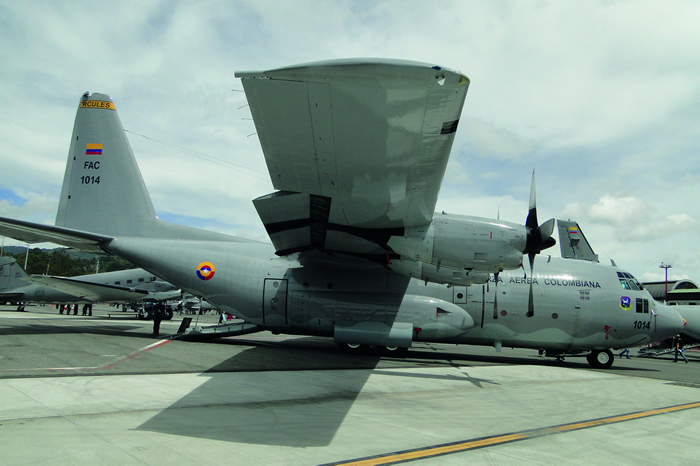Introduction to Vortex Lattice Theory
DOI:
https://doi.org/10.18667/cienciaypoderaereo.433Keywords:
Aerodynamics, Aerospace Engineer, Computational Fluid Dynamics – CFD, Lifting Theory, Vortex Lattice TheoryAbstract
Panel methods have been widely used in industry and are well established since the 1970s for aerodynamic analysis and computation. The Vortex Lattice Panel Method presented in this study comes across a sophisticated method that provides a quick solution time, allows rapid changes in geometry and suits well for aerodynamic analysis. The aerospace industry is highly competitive in design efficiency, and perhaps one of the most important factors on airplane design and engineering today is multidisciplinary optimization. Any cost reduction method in the design cycle of a product becomes vital in the success of its outcome. The subsequent sections of this article will further explain in depth the theory behind the vortex lattice method, and the reason behind its selection as the method for aerodynamic analysis during preliminary design work and computation within the aerospace industry. This article is analytic in nature, and its main objective is to present a mathematical summary of this widely used computational method in aerodynamics.
Downloads
References
Abbot, Ira, Albert von Doenhoff. (1959). Theory of Wing Sections. New York: Dover Publications, Inc.
Anderson, J. (1998). Aircraft Performance and Design. New York: McGraw Hill.
Anderson, J. (2001).Fundamentals of Aerodynamics. New York: McGraw Hill.
Bertin, J. & Smith, M. (1998). Aerodynamics for Engineers. New Jersey: Prentice Hall.
Chen, S. & Zhang, F. (2002). A Preliminary Study of Wing Aerodynamic, Structural and Aeroelastic Design and Optimization. AIAA-2002-5656.
https://doi.org/10.2514/6.2002-5656
Holst, T. (2005). Genetic Algorithms Applied to Multi-Objective Aerodynamic Shape Optimization. NASA/TM-212846.
https://doi.org/10.2514/6.2004-6512
Jackson, P. (2005). Jane's All the World's Aircraft. Cambridge University Press, UK.
Klatz, J. & Plotkin, A. (2001). Low Speed Aerodynamics. Cambridge University Press, Cambridge.
https://doi.org/10.1017/CBO9780511810329
Mason, W.H. (1998). Aerodynamics of 3D Lifting Surfaces though Vortex Lattice Methods. Virginia Polytechnic Institute and State University. Retrieved from http://www.aoe.vt.edu/~mason/Mason_f/CAtxtChap6.pdf>
McCormick, B.W. (1979). Aerodynamics, Aeronautics, and Flight Mechanics. New York: John Wiley & Sons.
Raymer, D. (1999). Aircraft Design: A Conceptual Approach. Reston: American Institute of Aeronautics and Astronautics, Inc.
Sivells, J. C. (1947). Experimental and Calculated Characteristics of Three Wings of NACA 64-210 and 65-210 Airfoil Sections with and without 2° Washout. NACA TN. 1422.

Downloads
Published
Issue
Section
Categories
License
Assignment of Copyrights
Authors assign Ciencia y Poder Aéreo journal the exclusive rights (reproduction, distribution, public communication, and transformation) to exploit and commercialize their work, in whole or in part, in all the formats and modalities of present or future exploitation, in all languages, throughout the life of the work and throughout the world.
All contents published in Ciencia y Poder Aéreo journal are licensed under a Creative Commons Attribution 4.0 International License, whose complete information is available at http://creativecommons.org/licenses/by/4.0/
Under the terms of this license, users are free to download, print, extract, archive, distribute and publicly communicate the content of articles, provided that proper credit is granted to authors and Ciencia y Poder Aéreo, scientific journal of the Graduate School of the Colombian Air Force. Except when otherwise indicated, this site and its contents are licensed under a Creative Commons Attribution 4.0 International License.
For other uses not considered under this license it is required to contact the Director or the Editor of the journal at the e-mail address cienciaypoderaereo1@gmail.com.
The Graduate School of the Colombian Air Force and this publication are not responsible for the concepts expressed in the articles, including the metadata or the affiliation stated by authors. This is the full responsibility of the authors.





















